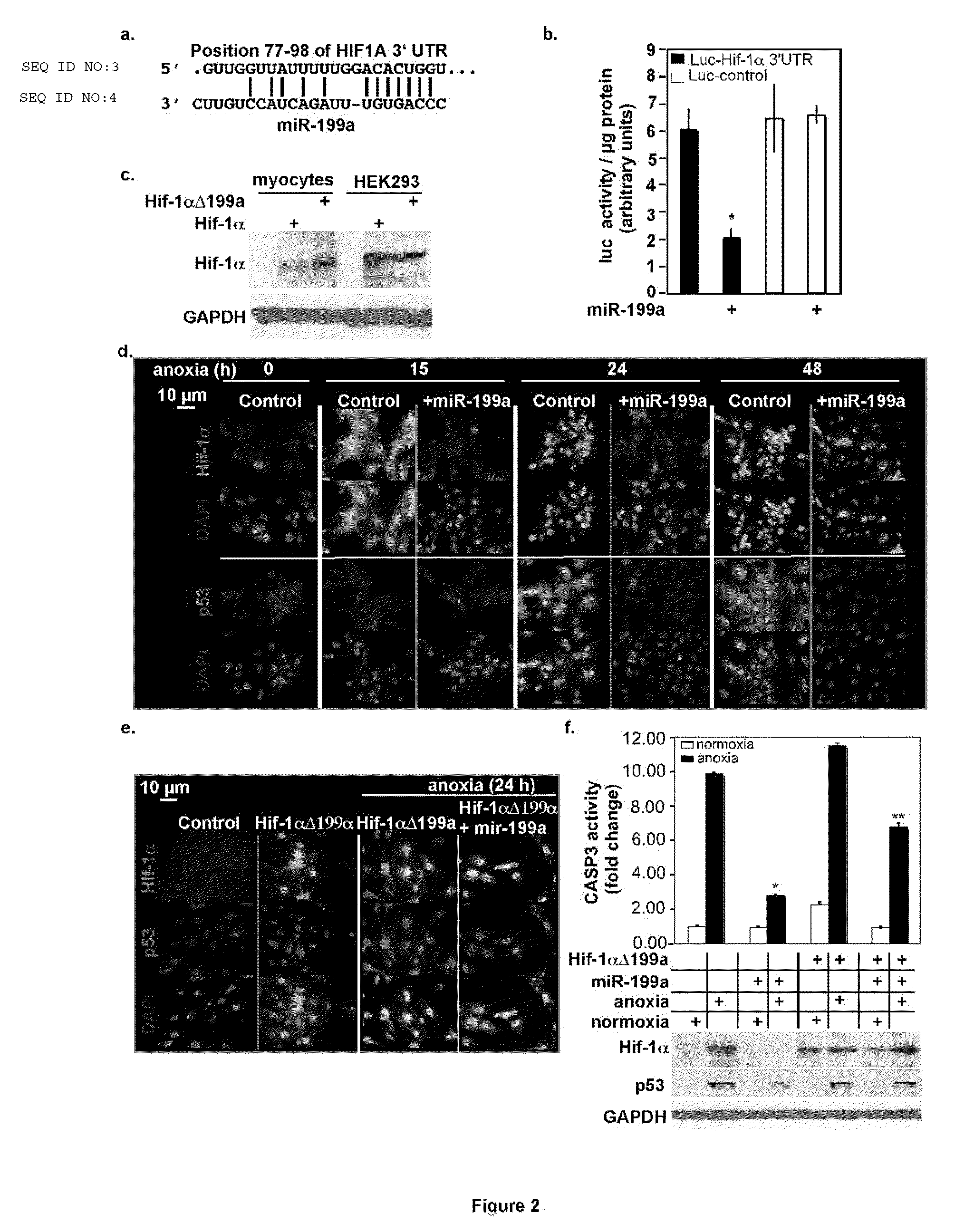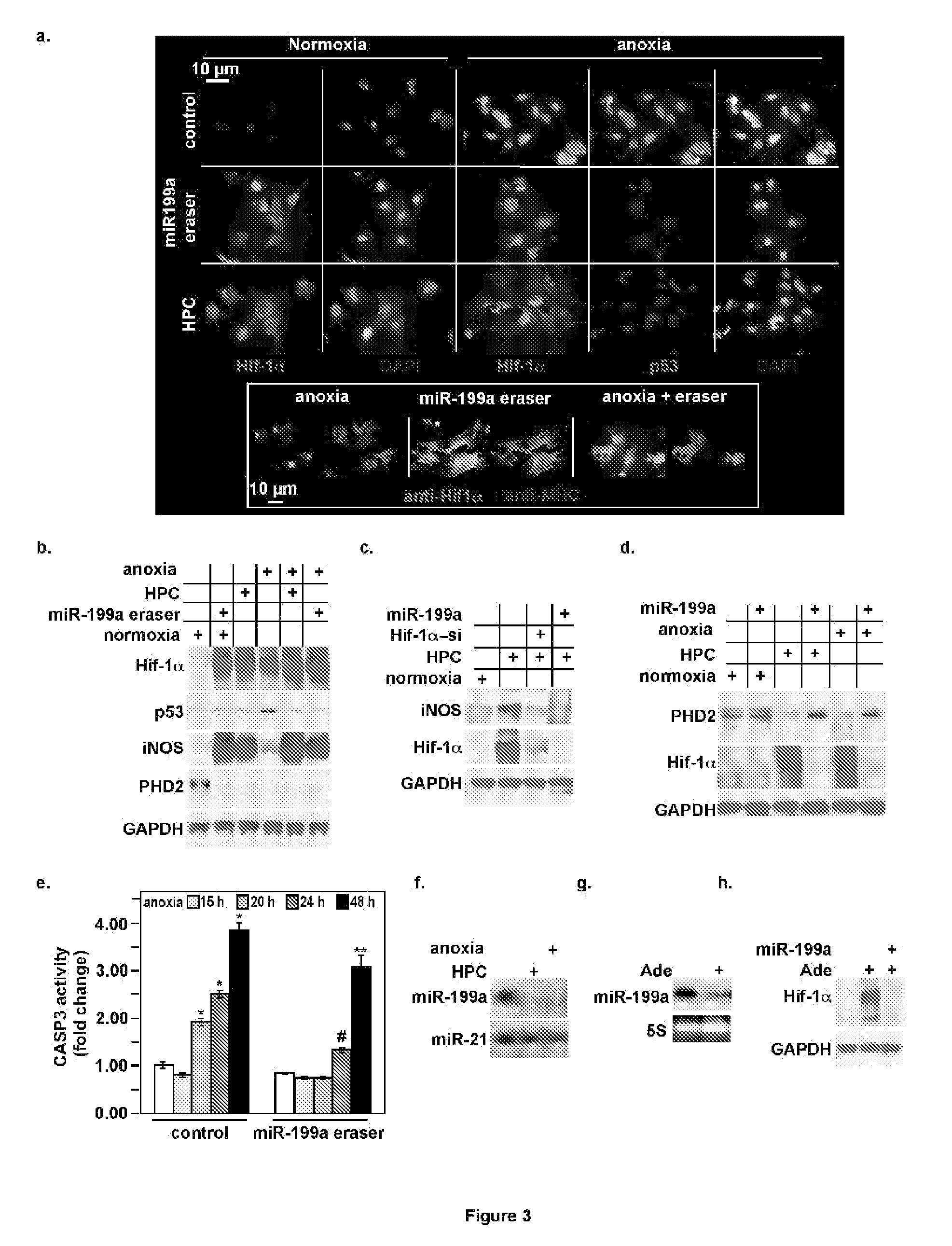Anti-sense microrna expression vectors
a technology of expression vectors and anti-sense microRNAs, applied in the field of anti-sense microRNA expression vectors, can solve the problems of poor cholesterol uptake, degradation of cardiac myocytes, and limitations of the approach
- Summary
- Abstract
- Description
- Claims
- Application Information
AI Technical Summary
Benefits of technology
Problems solved by technology
Method used
Image
Examples
example 1
Vector Creation
[0040]Two repeats of a specific antisense microRNA sequence is synthesized as a double strand DNA with ApaI- and HindIII restriction site-compatible overhangs at the 5′ and 3′ ends respectively.
[0041]In addition, at the end of the antisense sequence 6 deoxythymidine residues are added, which is a stop signal for RNA polymerase III.
[0042]This double strand DNA is cloned downstream of a U6 RNA polymerase III-dependent promoter (Ambion) in the plasmid vector pDC311 (from Microbix). This plasmid can be used as such, or delivered to the cells via a lipid-based transfection method.
[0043]In an additional step, the plasmid was cloned it into recombinant adenovirus serotype 5 (Microbix) for efficient delivery in cardiac myocytes both in culture and in vivo.
example 2
MiR-199a
Downregulation of MiR-199a During Anoxia is Required for Induction of Proapoptotic Genes
[0044]Results of studies regarding differentially expressed miRNA in the heart, shown in FIG. 1 wherein:
[0045]a. C57Bl / 6 mice were subjected to left coronary artery occlusion for 16 h. The ischemic and remote regions of the left ventricle, and the sham-operated ventricle, were isolated and total RNA was extracted and analyzed by Northern blotting (n=3).
[0046]b. Mice were subjected to left coronary artery occlusion for 0.5, 3, and 6 h and analyzed as in (a).
[0047]c. Myocytes were infected with a control or miR199a-expressing adenoviruses before exposure to anoxia for 24 h in complete culture medium with serum (where marked by +). Protein was extracted and analyzed by Western blotting (n=3).
[0048]d. Myocytes were treated as in (c). Total RNA was extracted and analyzed by Northern blotting (n=3), revealed that mature miR199a was reduced to undetectable levels during cardiac ischemia, while i...
example 3
Mi-R-21
Materials and Methods
[0095]Cell cultures and adenovirus Infection—Neonatal cardiac myocytes were prepared from Sprague Dawley rat hearts as previously described, using both pre-plating and percoll gradients for enriching of myocytes. Adult cardiac myocytes were prepared as previously described.
[0096]All exogenous recombinant DNA were delivered to the myocytes via recombinant adenoviruses using 10-20 multiplicity of infection.
[0097]Construction of adenoviruses—Recombinant adenoviruses were constructed, propagated and titered. The viruses were purified on a cesium chloride gradient followed by dialysis against 20 mM Tris buffered saline with 2% glycerol.
[0098]DNA Constructs cloned into recombinant Adenovirus—The stem-loop precursor of mmu-miR-199a-1 was synthesized and cloned into pDC316 vector under the control of a CMV promoter. For a negative control, a nonsense sequence was used in place of miR-199a, as previously described. The miR-199a-eraser is a tandem repeat of the ant...
PUM
| Property | Measurement | Unit |
|---|---|---|
| filling pressure | aaaaa | aaaaa |
| length | aaaaa | aaaaa |
| affinity | aaaaa | aaaaa |
Abstract
Description
Claims
Application Information
 Login to View More
Login to View More - R&D
- Intellectual Property
- Life Sciences
- Materials
- Tech Scout
- Unparalleled Data Quality
- Higher Quality Content
- 60% Fewer Hallucinations
Browse by: Latest US Patents, China's latest patents, Technical Efficacy Thesaurus, Application Domain, Technology Topic, Popular Technical Reports.
© 2025 PatSnap. All rights reserved.Legal|Privacy policy|Modern Slavery Act Transparency Statement|Sitemap|About US| Contact US: help@patsnap.com



